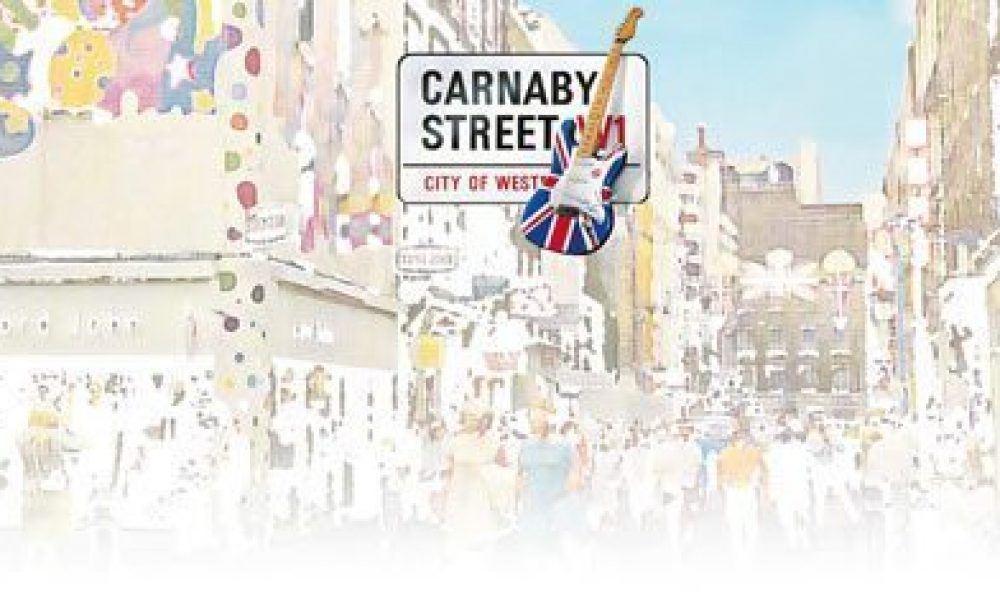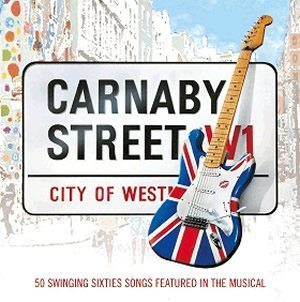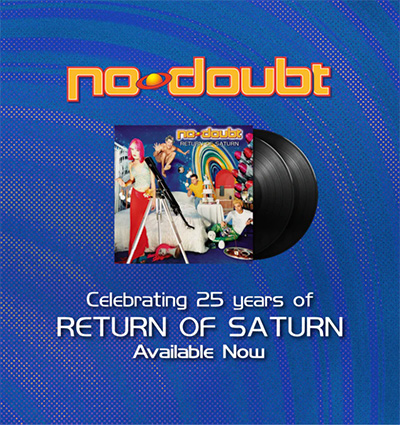Carnaby Street

Mini skirts, models and mods; Twiggy and Mary Quant; Op art and Pop art; they have all come to epitomise London in the Swinging 60s. But it is the bands and singers that made London the pop music capital of the world in those mid sixties dreaming years. Swinging London, so named by the New York Times in May 1966, with Carnaby Street at its heart, has come to epitomise an era of change, an era with a soundtrack featuring some of the best pop music ever. The new stage musical, Carnaby Street, aims to take people back to the swinging sixties.
It was from all over Britain that singers and groups descended on London to try to secure that elusive record deal; for every one that succeeded many more failed. Tom Jones came down from the Welsh valleys and was soon snapped up by Decca to make his first record, of a career that has lasted 50 years. Lulu from Glasgow was another that headed to the bright lights of an even bigger city and a recording contract with Decca. Both The Who and Dusty Springfield had not so far to travel, being Londoners, and despite being very different musically they represent the best of British sixties talent. The Spencer Davis Group with their teenage prodigy Steve Winwood drove down the M1 from Birmingham to be snapped up by Island Record’s boss, Chris Blackwell. The Walker Brothers had the furthest to travel, coming to London from America to seek their fortune – for a while they were one of the hottest groups in town. Fellow Americans, The Righteous Brothers never based themselves in London, but their records are an important part of the soundtrack to the 60s. Liverpudlian Billy Fury epitomised what was already old school rock and roll with the coming of Carnaby Street and Swinging London, but his talent was awesome. In 1960 he rejected a Liverpool band called the Beatles who auditioned to become his backing group. What if he hadn’t and he had offered them a job?
“Perhaps nothing illustrates the new swinging London better than narrow, three-block-long Carnaby Street, which is crammed with a cluster of the ‘gear’ boutiques where the girls and boys buy each other clothing.” – Time Magazine April 1966
Taking its name from the local similarly named ‘Karnaby House’, Carnaby Street was originally built in the 17th Century and populated by small houses. Due to its location in the middle of London, the street developed over the years into a busy market. By the sixties, the street proved a popular destination for followers of both the Mod and Hippie cultures. During this period it was common for bands such as the Small Faces, The Who and The Rolling Stones to be seen in the area, working at the legendary Marquee Club around the corner in Wardour Street. Carnaby Street became a social hub with its underground music bars in the surrounding district and was soon one of the coolest destinations in ‘Swinging London’.
John Stephen, the self-proclaimed King of Carnaby Street opened the first of his shops, ‘His Clothes’ in 1963. He was soon followed by I Was Lord Kitchener’s Valet, Lady Jane, Kleptomania, Mates, Ravel, and string of others who all catered for pop stars and young people who wanted to look like pop stars. Designers like Mary Quant, Lord John, Merc and Irvine Sellars let everyone know that conformity was yesterday. Londoners wanted to dress differently, not just from the ‘squares’ that loved a dark suit or sensible frocks, but also from one another; individuality over the mode of the masses was everything. Soon the whole country, and then the whole world wanted to dress like Londoners and listen to the music London was listening to.
The rise of Carnaby Street at the same time as the coming of the Beatles and all the other beat bands was no coincidence. It also coincided with the first appearance on British TV screens of the BBC’s Top of the Pops in January 1964; this was at the same time as the Beatles set off to conquer America, followed in June by The Rolling Stones and every other self-respecting British band.
In 1965 Roger Daltry the lead singer of The Who said, “I never want to grow old, I want to stay young forever.” He also sang ‘My Generation’ with Pete Townsend’s lyrics about hoping to die before he got old, but all in all that was not the vibe that either the Who or the swinging sixties was all about. The Who began ’65 with ‘I Can’t Explain’, quickly following it with ‘Anyway, Anyhow, Anywhere’ before ‘My Generation’ almost topped the charts. These and all the other wonderful sixties singles from The Who are collected together on The Greatest Hits and More. Naturally, the band’s first album was also called My Generation and features a cover photo of the Who looking stylish with bass player John Entwistle in a Union Jack jacket - totally de rigueur in ’65.
On the very first edition of Top of the Pops on New Year’s Day 1964 a new single by the female member of the Springfields, a trio that had a few hits over the previous year or so, was one of half a dozen songs that featured. Dusty’s ‘I Only Want To Be With You’ was infectious and helped by her TV appearance it was soon at No.4 in the charts. For the rest of the decade she was rarely off the singles chart with classics like ‘Some of Your Lovin’ and her No.1, ‘You Don’t Have To Say You Love Me’. By the end of the decade, Dusty had grown up and moved on to making wonderful records like ‘Son of a Preacher Man’ from the brilliant, Dusty in Memphis album.
Lulu, like Dusty, proved that it was not just the boys in the bands that made this such an exciting time, even if she did have the help of her Luvvers on her first hit. ‘Shout’ was a cover of a Motown record by The Isley Brothers and is one of those records that is guaranteed floor filler at a wedding disco; surprisingly it was not as big a hit as you might imagine, only making No.7 on the chart. Lulu has had a career that has lasted far longer than many would have thought possible back when she started; she even covered David Bowie’s ‘The Man Who Sold The World’ in 1973 and had a top.3 record as a result.
The Spencer Davis Group was from Birmingham, but was named after their Welsh guitarist; they took a while to capture the public imagination having three lowly charting hits before having two chart-toppers on the trot with, ‘Keep On Running’ in later 1965 and ‘Somebody Help Me’ in early 1966. The band’s organist and singer was just sixteen when they had their first hit but Steve Winwood was what made this band exceptional. After he quit Spencer Davis in 1967 Winwood formed Traffic and later with Eric Clapton the short-lived Blind Faith before having a solo career, which still goes on.
The Walker Brothers, who were not in fact brothers at all, arrived in Britain because Gary Leeds who had recently joined to make the duo a trio had just toured the U.K. in U.S. singer P.J Proby’s backing band; Leeds thought their music would go over better in Britain than at home. He was not wrong, as their first hit was the towering, ‘Love Her’ in 1965; they followed it with Burt Bacharach’s ‘Make It Easy On Yourself’ that topped the charts in the late summer of 1965. A string of hits followed before lead heartthrob and the owner of one of pop’s great voices, Scott Walker, quit to have a solo career that has been one of the most fascinating, if not the most prolific, in modern music.
The other American brothers – they were also not brothers – who recorded the soundtrack to these swinging times, were The Righteous Brothers. The really did crash into swinging London when ‘You’ve Lost That Lovin Feelin’ produced by the errant genius Phil Spector went to No.1 at the start of 1965. They were never able to repeat that success in the sixties, despite a string of wonderful, big sounding, records, but in 1990 again topped the UK charts with a re-release of their original follow-up to ‘You’ve Lost That Lovin Feelin’. ‘Unchained Melody’ was featured in the movie Ghost and second time around, nothing could stop it.
Early in his career Tom Jones was asked if he was copying P.J. Proby, “I am what I am. I have never tried to be what is popularly conceived as a modern sex symbol.” Twenty-four-year-old Tom’s first hit single came out in mid-February 1965 and took everyone by surprise, entering the UK chart on the week of its release – a month later, the magnificent, ‘It’s Not Unusual’ was at No.1 in the UK.
Musically for much of his career, Tom Jones has seemed at odds with what was considered popular, but he has always found an audience that is totally on song with his choice of material. The Welshman is another that has defied the odds and forged a career that is as long as it is varied and he has always had a good ear for a great song.
Today Billy Fury is someone who has slipped off the musical radar, his records do not get played too often on radio and it is a travesty. While not having the good sense to take the Beatles as his backing band he nevertheless had a string of hits through the 1960s; seventeen in all, including ‘Last Night Was Made For Love’ that made No.5 and ‘Like I’ve Never Been Gone’ that was No.3 in 1963. Both are featured on the compilation album, Carnaby Street that accompanies the stage musical of the same name. Sadly, Billy has been gone for a while; he died in 1983, in his early forties, from heart problems.
Do not for a minute think that Carnaby Street is just about the 1960s. The Jam has a song written by bass player Bruce Foxton called appropriately, ‘Carnaby Street’, it was the B-side of the single ‘All Around The World’. In 1992, U2 shot the video for ‘Even Better Than The Real Thing’ from their album, Achtung Baby in Carnaby Street. It features a doppelganger version of the band in a shop window playing to an audience of shoppers.
 The Carnaby Street musical is set against the backdrop of London’s West End in the Sixties – “a time full of hope and freedom, when the world is changing and anything seems possible”. It has much of the music we’re featuring, along with many other hits from the time. The show is directed by Bob Thomson, (Blood Brothers and Dreamboats & Petticoats) and designed by Matthew Wright (Evita and La Cage aux Folles). Carnaby Street tells the story of Jude, a working-class boy from Liverpool, new in town and armed with nothing but his guitar and his dream of fame and fortune; it follows the highs and lows, the passion and heartbreak of his journey in pursuit of stardom. The show is touring the UK throughout the summer of 2013. The album and the songs in the musical were compiled from the memories of Co-Writer and Producer Carl Leighton-Pope who grew up in his father’s pub The Crown and Two Chairman in Soho’s Dean Street. Carl worked five nights a week in The Marquee Club watching some of the most exciting bands in sixties Britain. The music of The Who, Manfred Mann, Billy J Kramer and The Dakotas, The Animals and many others was heard at the club or filled the airwaves of the pirate radio stations. The classic hits of this era such as ‘My Generation’, ‘Son of a Preacher Man’ – which is featured heavily in the show – and ‘Downtown’ form the heart of the album, and are a great reminder of WHERE IT ALL BEGAN!
The Carnaby Street musical is set against the backdrop of London’s West End in the Sixties – “a time full of hope and freedom, when the world is changing and anything seems possible”. It has much of the music we’re featuring, along with many other hits from the time. The show is directed by Bob Thomson, (Blood Brothers and Dreamboats & Petticoats) and designed by Matthew Wright (Evita and La Cage aux Folles). Carnaby Street tells the story of Jude, a working-class boy from Liverpool, new in town and armed with nothing but his guitar and his dream of fame and fortune; it follows the highs and lows, the passion and heartbreak of his journey in pursuit of stardom. The show is touring the UK throughout the summer of 2013. The album and the songs in the musical were compiled from the memories of Co-Writer and Producer Carl Leighton-Pope who grew up in his father’s pub The Crown and Two Chairman in Soho’s Dean Street. Carl worked five nights a week in The Marquee Club watching some of the most exciting bands in sixties Britain. The music of The Who, Manfred Mann, Billy J Kramer and The Dakotas, The Animals and many others was heard at the club or filled the airwaves of the pirate radio stations. The classic hits of this era such as ‘My Generation’, ‘Son of a Preacher Man’ – which is featured heavily in the show – and ‘Downtown’ form the heart of the album, and are a great reminder of WHERE IT ALL BEGAN!












